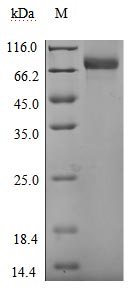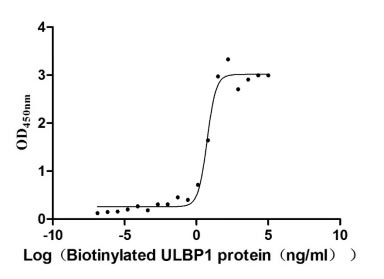The recombinant human ULBP1 protein is a biotinylated protein with relatively high bioactivity. It is produced in mammalian cells and fused with an mFc-Avi-tag at the C-terminus. Its expression region corresponds to amino acid residues 26-216 of the human ULBP1 protein. The purity of this ULBP1 protein is measured by SDS-PAGE and reaches up to 95%. On the gel, it has an apparent molecular mass of 67 kDa due to glycosylation. It contains low levels of endotoxin, less than 1.0 EU/ug determined by the LAL method. In the functional ELISA, this biotinylated ULBP1 can bind to the KLRK1, with EC50 of 4.254-7.295 ng/ml. This biotinylated ULBP1 could be used to isolate ULBP1 antibodies from samples for subsequent analyses with high sensitivity. And it is available now.
ULBP1 is a stress-induced ligand for the activatory receptor NKG2D. It is found as a cell-surface protein on some malignant cells including human hepatocellular carcinomas. Upregulation of ULBP1 is detected during HCMV infection.







